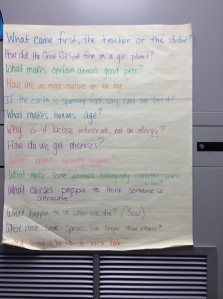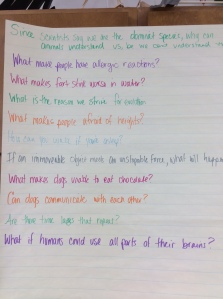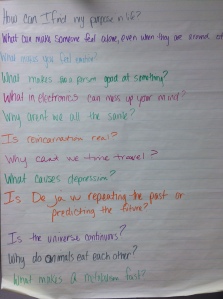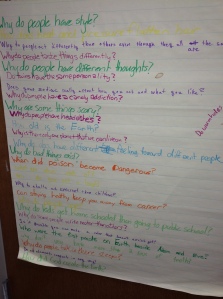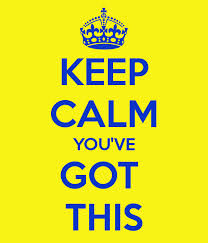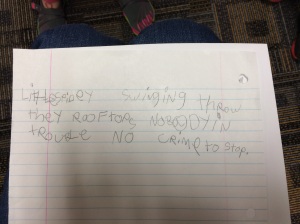The Struggle is Good
If you haven’t yet discovered the Open Middle site, may I introduce you. Welcome to the world of challenging, thought provoking problems. Dan Meyer introduced this concept, creating problems that have a definite beginning and end, but have an “open middle” that creates the space for students to solve problems multiple ways. The open middle is what I love about math, why math is so much more than learning a set strategy. It allows for understanding based on how you think and how you understand numbers. I have seen kids come up with strategies that I would have never thought of…oh, how I love those conversations. For that reason, this site is a gift.
This past week, I used a fraction problem with my 3rd graders. Here is it: (source: Open Middle)
Students were asked to place 3/4 on this number line.
While I anticipated my students to be a little stumped by the fact that 3/3 would not be at the end of the line, I had no idea the level of difficulty this would pose. I wish I had recorded all the great discussion that ensued.
They justified their position, even tried to form a coup and overthrow me, when I challenged them placing 3/3 at the end of the line. Guiding students through questioning is an art that I am practicing daily and there were moments that I wanted to just break down and “teach.” But then it happened….my favorite sound in the world…”Ohhh, I see it.” First there was one, one brave soul that walked over to the dark side and placed 3/3 on the number line correctly. She even grabbed a ruler, measured the distance from 0 to 1/3, and proceed to place 2/3 and 3/3 exactly in the right place. As soon as she began to measure, the kids got so excited as they SAW it.
At this point, I thought it was smooth sailing. Next came the true task of placing 3/4, so the first thing they wanted to do was place 1/2. Perfect. I loved how they were using benchmark fractions, and I was sure that their misconceptions were suddenly gone. Well….here is how is actually went down.
The black line is where one student placed 1/2 and the red is where another tried to emphasize and defend that 1/2 would indeed be placed there. I used all the skills I learned in my acting class and asked them to talk about what they knew was true. The told me that 3/3 was the same as one whole. We discussed and discussed. Finally, they did come to realize where 1/2 should be and eventually 3/4, but not without a clear struggle. These are not kids I teach everyday, but they are bright students with a wonderful teacher. I don’t know if it was because they have only looked at fraction number lines with ending points of 0 and 1, but this experience reiterated the importance of exposing students to problems in multiple ways. If they cannot transfer the information they learned from one type of problem to the next, then their understanding is basic and needs to be developed so much further. I’m reading everything I can get my hands on…I want to be the best teacher I can be…I want to challenge, push, equip and help students make a rich web of connections.
Feel free to pass on any wisdom you have. It takes a village…


